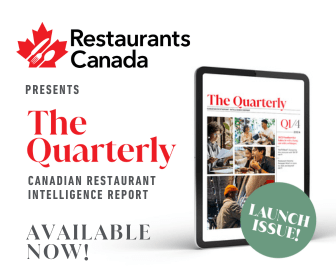Canada’s foodservice industry was one of the first sectors impacted by COVID-19, and continues to be one of the hardest hit: 800,000 foodservice workers have been laid off or have had their hours cut down to zero due to the difficult choices that restaurant operators were forced to make. That’s nearly two thirds of our industry’s workforce and double the number of jobs that Canada’s entire economy lost, across all sectors, in the year following the 2008 financial crisis.
These jobs might not return if restaurants aren’t able to survive and recover from the unprecedented challenges they’re facing.
Nearly one out of 10 respondents to a Restaurants Canada survey told us they’d already permanently shut down by end of March.
If conditions don’t improve over the next few months, one out of every two independent restaurants does not expect to survive.
In our 75 years of advocating for Canadian foodservice businesses, this is by far the worst crisis — both human and financial — that Restaurants Canada has ever seen.
When restaurants struggle, so do the communities they serve
I receive calls every day from devastated restaurant owners who are looking for assurances that they’ll be able to get through the unforeseeable challenges they’re now facing.
These small and medium-sized business owners are among Canada’s most passionate and hardworking entrepreneurs and their businesses are integral to the economic and social fabric of our everyday lives. Beyond serving us delicious food, restaurants are a top source of jobs, contribute significantly to charitable causes and provide enjoyable spaces to meet new people and gather with friends and family.
What restaurants need to continue serving their communities
Throughout the COVID-19 pandemic, restaurants have played a critical role providing their communities with safe and reliable meal options — this has been especially important for first responders, essential service workers and those in self-isolation.
Those that were able to remain open for takeout and delivery have demonstrated an exceptional level of responsiveness and innovation while continuing to ensure the health and safety of their staff and everyone they serve.
But the creativity and resiliency of our industry won’t be enough to prevent widespread permanent closures as restaurants continue to struggle with insufficient cash flow and insurmountable debt.
As jurisdictions across the country move forward with lifting emergency measures, restaurants will need help to remain viable until they are on the path to full recovery.
While all levels of government have made extraordinary efforts to respond with emergency relief measures, restaurants continue to need stronger support in the following areas to have a fighting chance at survival:
- Commercial tenant protections and rent relief. While the Canada Emergency Commercial Rent Assistance (CECRA) program responds to one of the greatest challenges for restaurants, many will be unable to secure any protection or relief through this mechanism, through no fault of their own. A broader rent relief program is needed to capture businesses that have experienced a significant decline in sales but do not meet the current qualifying threshold. Commercial tenant protections also continue to be needed for those not benefiting from this program to relieve pressure while all stakeholders come to the table to develop immediate and long-term solutions. Some provinces, like New Brunswick and Nova Scotia, have already taken action on this front. Continued leadership is needed from the federal government to encourage other jurisdictions to adopt non-eviction policies.
- Help with cash flow and rising debt levels. Most restaurants are small and medium-sized businesses that were already operating with razor thin profit margins before COVID-19. With little-to-no sales revenue coming in for most foodservice businesses, many have already depleted their reserve funds, or soon will. Existing measures may need to be expanded and new solutions continue to be welcomed to ensure restaurants will have enough working capital to reopen their doors. Due to the perishable nature of their inventories, many suffered unrecoverable losses when physical distancing measures began and will also need support to restock as they reopen.
- Assistance with labour costs. While the federal government’s 75 per cent wage subsidy is helping some restaurants keep staff on payroll, those that are now preparing to reopen are concerned about being able to access this support in the months ahead. While further provincial assistance is also being sought, the federal government could send a welcomed signal with an extension of the Canada Emergency Wage Subsidy (CEWS) program by a few months.
Restaurants Canada looks forward to continuing our work with all levels of government toward solutions in these areas.
Sincerely,
![]()
Shanna Munro, President and CEO, Restaurants Canada


